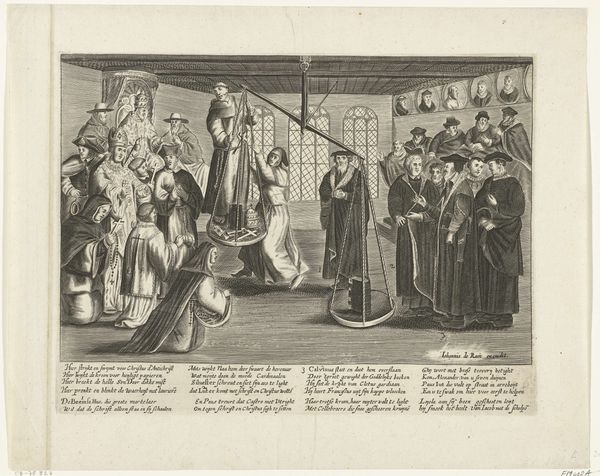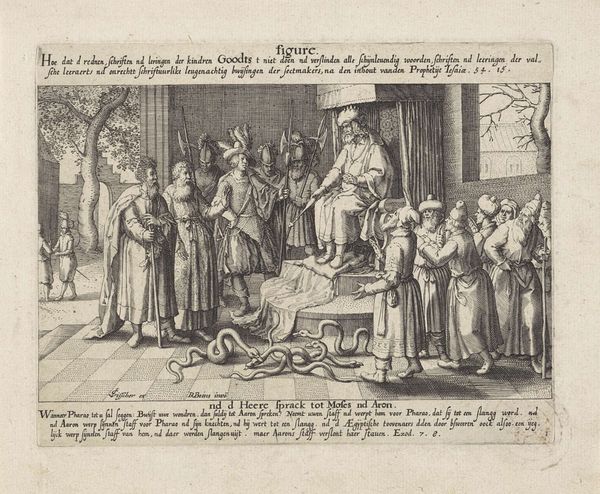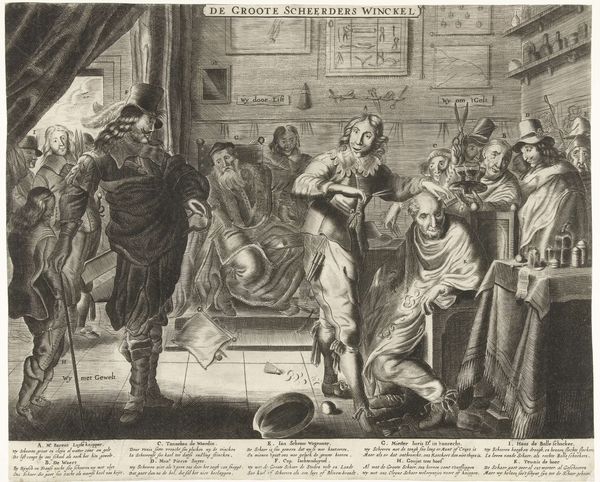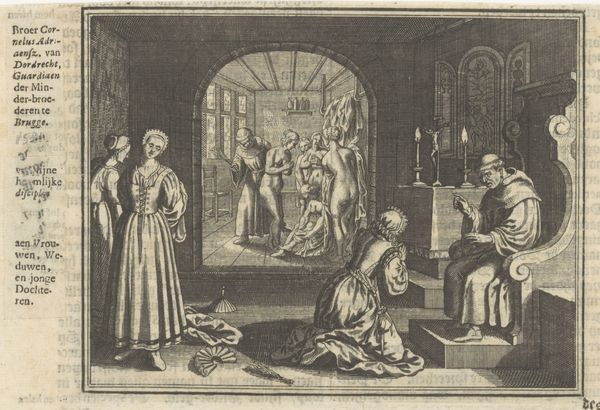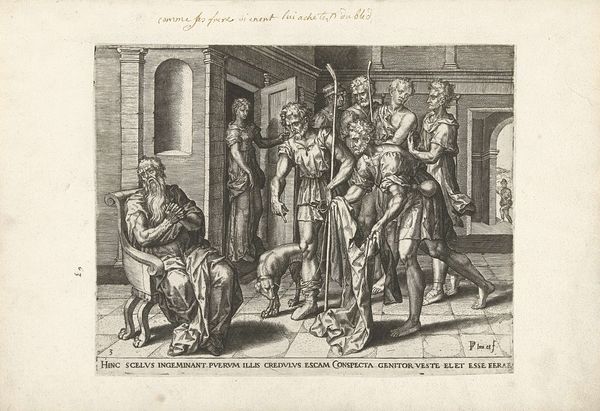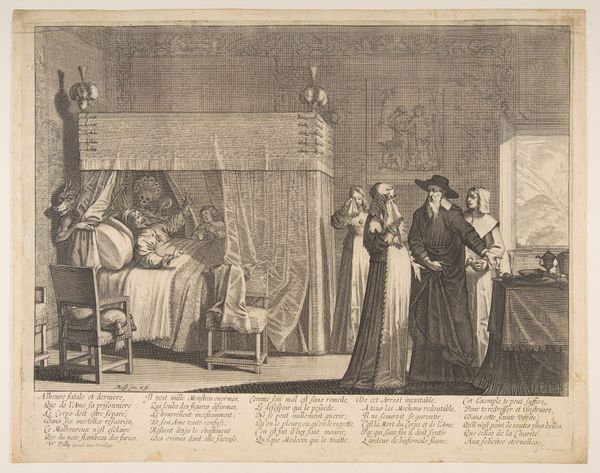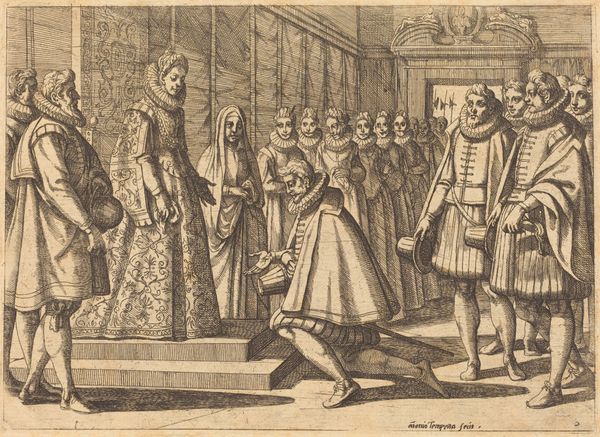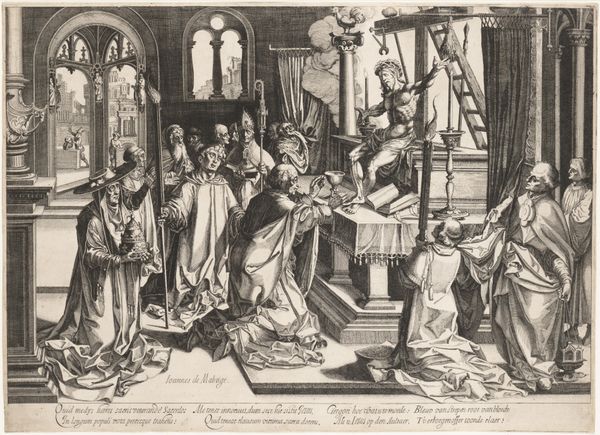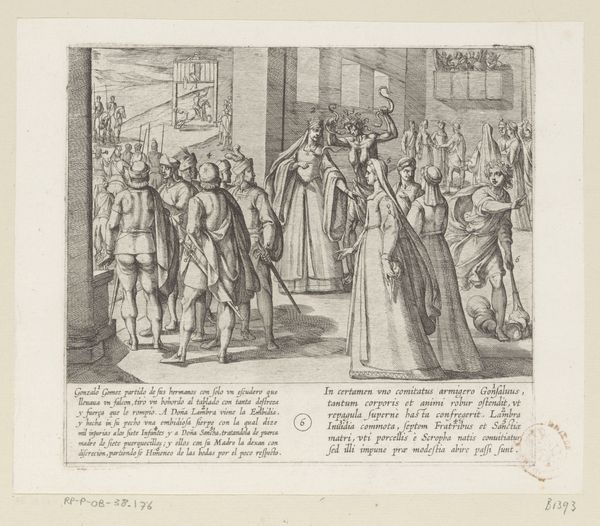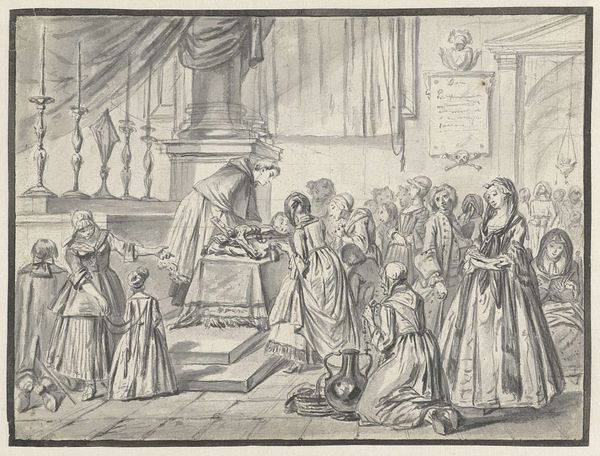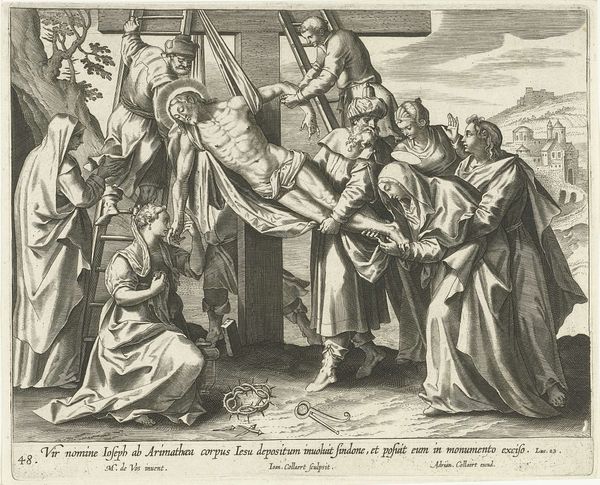
engraving
#
narrative-art
#
baroque
#
old engraving style
#
figuration
#
line
#
history-painting
#
engraving
Dimensions: height 400 mm, width 500 mm
Copyright: Rijks Museum: Open Domain
Editor: This is an engraving titled "De bijbel op de weegschaal," dating somewhere between 1675 and 1726, currently housed in the Rijksmuseum. The piece strikes me as incredibly intricate. I'm fascinated by how the artist uses line to create depth and texture in a monochrome palette. What do you see in this piece that I might be missing? Curator: Note how the entire composition is governed by the central axis of the scale. One side presents a cluster of figures representing Catholic authority, richly ornamented, yet pressed downward by the very objects they handle. Conversely, figures associated with Protestantism stand in plainer attire. Do you observe how they, too, are being weighed down? Editor: Yes, I notice that both sides are laden, but with different kinds of objects. What's the significance? Curator: Consider the visual weight of each element. The Bible, in its physical form, seems to exert a gravitational pull of truth, whilst ornate clerical robes and objects visually weigh down figures in opposition, as these pull downwards it causes the other side to lift upwards. Ask yourself why the artist structured the space and figures in such a way. It may suggest an intent beyond mere documentation of persons. Editor: So, you're saying the visual composition itself—the lines, the balance, the arrangement of forms— argues for a specific interpretation, almost independent of historical context? Curator: Precisely. Though awareness of religious conflict provides helpful context, we are equipped, through attending to visual elements, to see a structured commentary presented via line, form and design. Editor: That's a helpful perspective. I hadn't considered how forcefully the artist used formal choices to contribute to the work's meaning. Curator: Indeed. Form is not simply a vessel; it is content.
Comments
No comments
Be the first to comment and join the conversation on the ultimate creative platform.
